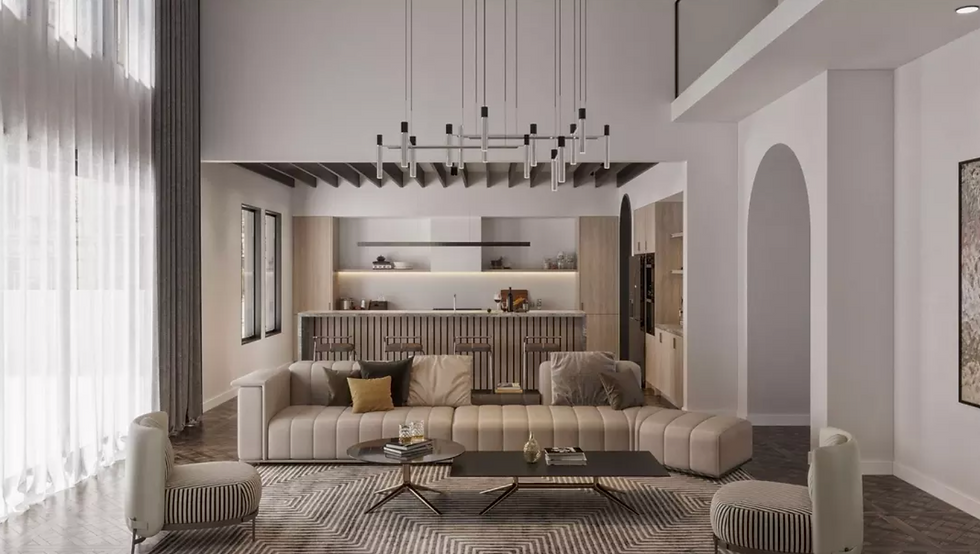Designing for Growth: Key Elements of Scalable Commercial Architecture
- rmotley
- Jul 22
- 3 min read
In today’s dynamic business environment, commercial spaces must do more than meet current needs they must anticipate and adapt to future ones. Scalable commercial architecture provides a framework for long-term success, enabling businesses to grow, pivot, and reimagine their operations without requiring a complete redesign. Below, we explore three foundational elements that support scalability in commercial building design, helping decision-makers invest wisely in future-ready spaces.

Flexible Floor Plans and Adaptive Infrastructure
The first key to scalable commercial architecture is designing with flexibility in mind. As businesses grow or change direction, they often need to reconfigure their layout to accommodate new departments, rezone collaborative areas, or repurpose space for different functions.
This is where business space planning becomes critical. Architects must consider how a space will be used not only now but also in five or ten years. Open floor plans, modular partitions, and mobile furnishings support this adaptability. Infrastructure should also allow for easy reconfiguration, including centralized mechanical systems, raised flooring for easy wiring access, and universal lighting layouts.
Designing flexibility into the structure from the start prevents the need for expensive and disruptive overhauls down the line, giving businesses room to evolve.
Built-In Expansion Potential
Another hallmark of scalable commercial architecture is planning for physical expansion both horizontally and vertically. Whether it’s the ability to add more square footage or the foresight to install support systems for future stories, forward-thinking design ensures buildings can grow with their tenants.
For instance, leaving space on the property for future structures or parking expansion ensures that as a company scales, its site remains viable. Inside, structural components like columns, load-bearing walls, and HVAC systems can be sized to accommodate growth, reducing the need for major reinforcements later.
This is where future proof design strategies shine. Designing with growth in mind ensures the structure supports business evolution whether through employee expansion, customer growth, or new service offerings. These considerations future-proof the investment, adding long-term value for both owners and occupants.
Technology Integration and Sustainable Systems
Technology is an ever-evolving component of business operations, and modern commercial architecture must be designed to accommodate the digital demands of today and tomorrow. Scalable design includes the infrastructure to support emerging technologies like smart lighting, advanced security systems, and scalable data networks while leaving room for future upgrades.
At the same time, sustainable features have become a standard, not a luxury. Scalable architecture integrates efficient HVAC systems, renewable energy readiness (like solar panel placement), and water-saving features that reduce operational costs while aligning with regulatory trends and environmental goals.
Importantly, these smart and sustainable choices also support future proof design by ensuring long-term performance, compliance, and marketability. As businesses are increasingly held to environmental standards, buildings that support sustainability and tech adoption position tenants and developers ahead of the curve.
Build for the Future with ArchEvoke
Whether you're launching a new business or planning for long-term expansion, scalable commercial architecture provides the structure to support your goals. By focusing on flexible layouts, expansion-ready infrastructure, and smart sustainability strategies, companies can build spaces that work for them today and grow with them tomorrow.
At ArchEvoke, we specialize in scalable design solutions rooted in deep experience with business space planning and future proof design. Our team collaborates closely with clients to deliver commercial spaces that adapt, endure, and empower growth because your space should grow as boldly as your business does.




Comments